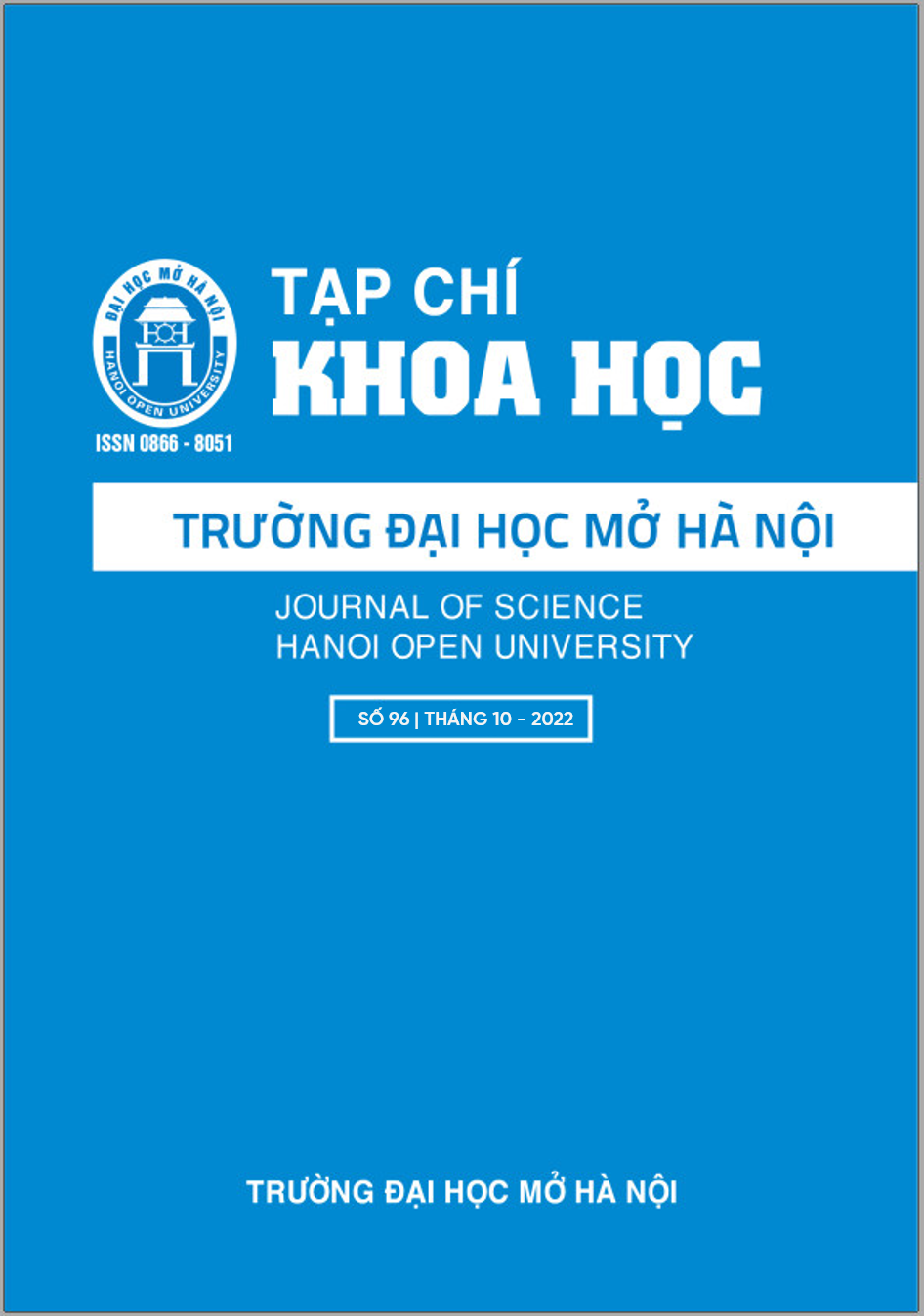FACTORS DETERMINING HANOI OPEN UNIVERSITY LECTURER’S WORK MOTIVATION
Keywords:
working motivation, university lecturer, Hanoi Open UniversityAbstract
This research is to study how factors impacting working lecturers’ motivation at Hanoi Open University (HOU) by examining 120 questionnaire and using Cronbach’s Alpha, Exploratory Factor Analysis and the linear regression analysis. The results found that six factors of lecturers’ working motivation (sorting in descending order): Direct leadership, Working conditions, Income and benefits, Work autonomy, Colleagues, Training and promotion opportunities. Based on the results, the research proposes a number of solutions to enhance Hanoi Open University lecturers’ working motivation.
References
[1]. Arnold and J.a Kol. (2007). Psychologie práce pro manazery a personality. Brno, Computer Press.
[2]. Barzoki, Attafar and Reza Jannati (2012). An analysis of factors affecting the employee’s motivation based on Herzberg’s Hygiene factors theory. Australian Journal of basic and applied sciences.
[3]. Boeve W.D (2007). A national Study of Job factors among faculty in physician assistant education, Eastern Michigan University.
[4]. Crandell T.L., Crandell C.H. & Vander Zanden J.W. (2012). Human development (10th ed.). New York, NY: McGraw-Hill.
[5]. Documents of the 13th Vietnamese Party Congress
[6]. Grensing, L (1991). Motivating today’s work force: when the carrot can’t always be cash. Washington: Self-Counsel Press.
[7]. Han J., Yin H. & Wang W. (2016). The effect of tertiary teachers’ goal orientations for teaching on their commitment: the mediating role of teacher engagement. Educational Psychology, Google Scholar.
[8]. Herzberg F. (1959). The Motivation to work, Harvard Business Review Classics, New York.
[9]. Janet Cheng Lian Chew (2004). The Influence of Human Resource Management Practices on the Retention of Core Employees of AustralianOrganisations: An Empirical Study, Master thesis, Murdoch University.
[10]. Kaiser J. S. (1981). Motivation Deprivation: No Reason to Stay. Journal of Teacher Education. 1981;32(5):41-43
[11]. Kovach K. A. (1987). What motivates employees? Workers and supervisors give different answers. Business Horizons, 30, 5,
-65
[12]. Mahfuzur Rahman, Dilip Kumar Mondol and Ayub Ali (2013). Nexus of employee motivation with hrm and workplace behaviour: an assessment of the dominant factors. Management Research and Practice, 5, (4), 49-57.
[13]. Maslow A.H. (1943). A theory of human motivation. Psychological Review, 50, 370-
[14]. McClelland D. C. (1985). Human motivation. Cambridge, UK: Cambridge University Press.
[15]. Moodley S., Hove G. & Karodia A.M. (2018). The factors affecting employee motivation and its impact on organisational performance at an engineering supplies company in Durban, Kwa-zulu natal. Kuwait Chapter of the Arabian Journal of Business and Management Review, 7, 4.
[16]. Nelson D.L. (2003). Organizational Behaviour: Foundation, Realities and Challenges (4th ed.), Australia: Thomson South-Western.
[17]. Nunnally J. and Bernstein I. (1994). Psychometric Theory 3rd edition. MacGraw- Hill, New York.
[18]. Ololube N. (2006). Teachers Job Satisfaction and Motivation for School Effectiveness and Assessment. University of Helsinki. Organizational Culture and Climate, Thousand Oaks, CA: Sage, 60-87.
[19]. Pinder, C. C. (2008). Work motivation in organizational behavior, 2nd ed. Psychology Press.
[20]. Robbins S.P. (2013). Organizational Behavior. NewYork: Prentice Hall.
[21]. Safiullah A. B. (2015). Employee Motivation and its Most Influential Factors: A study on the Telecommunication Industry in Bangladesh, World Journal of Social Sciences, 5(1), 79-92.
[22]. Sandhe A. and Joshi A. (2017). An empirical study of motivation and factors affecting motivation for teaching staff in private universities/colleges in Vadodara, Revista de Administração de Roraima, 7, 1, 5-16.
[23]. Sell L. and Cleal B. (2011). Job Satisfaction, Work Environment, and Rewards: Motivational Theory Revisited. LABOUR, 25, 1-23.
[24]. Shah A. and Mullainathan S. & ShafirE. (2012). Some Consequences of Having Too Little. Science, New York, 338.
[25]. Sinclair C. (2008). Initial and changing student teacher motivation and commitment to teaching. Asia-Pacific Journal of Teacher Education.
[26]. Teck-Hong and Waheed A. (2011). Herzberg’s Motivation - Hygiene Theory and Job Satisfaction in the Malaysian retai sector: The Mediating effect of love of money. Asian Academy of Management Journal, 16 (1), 73-94.
[27]. Towers Watson Global Workforce Study, 2012.
